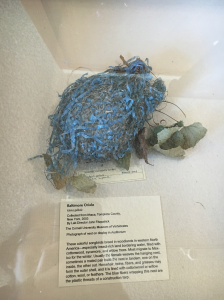Last week, I went off campus to Cornell’s Ornithology Lab. The experience was so far outside the realm of Rose events I usually attend (I generally prefer the discussion sessions, debates, and lectures). With that said, this was probably my favorite Rose event thus far. We took a lovely nature hike (on a beautiful day, I might add) to see if we could identify some birds.
As a side note: those geese swimming in the water were rather aggressive.
Our tour guides were actually Cornell students, and it’s unbelievable how knowledgeable they were. They let us in on some pretty cool facts too: apparently male and female chickadees have very similar color patterns, so they’re difficult for humans to distinguish. However, they can do so quite readily because they perceive more than just visual light. They can sense the EM waves radiating from their fellow flock members. How ornithologists figured that out is beyond me, but it’s definitely a really cool ability!
After our nature hike, we took a tour of labs and exhibits. What I found unbelievably striking was the fact that this bird’s nest:
is lined with several blue fibers. Those are the plastic threads of a construction tarp. Birds are literally making nests with human garbage. Is that not sad? I guess this trip not only helped me learn a bit about ornithology, but it also gave me insight into how much of a realistic and extensive impact humans have on our environment.



